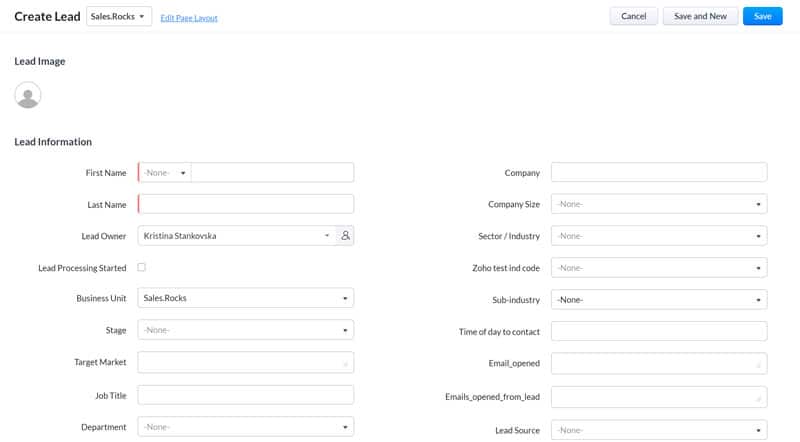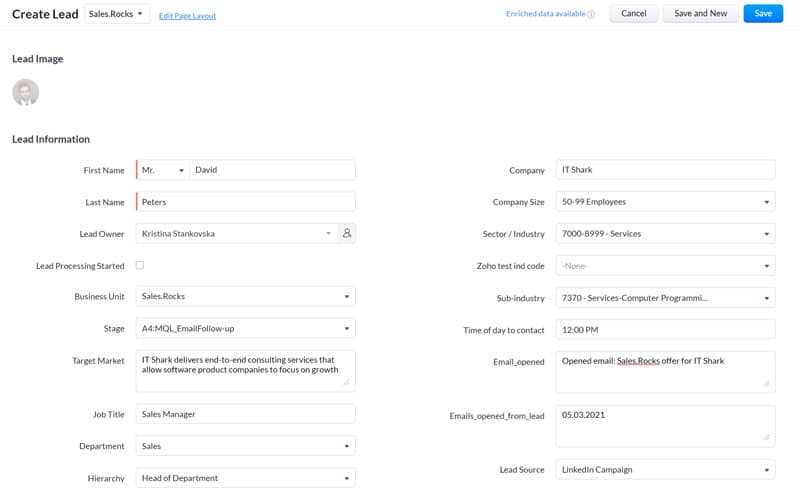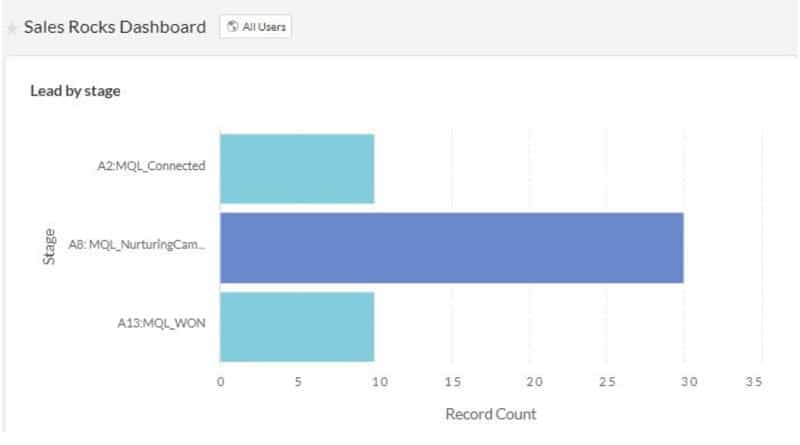Updated on January 25, 2022
There are dozens of little steps in the process of connecting with leads and convincing them to buy––and when you have multiple prospects in your sales funnel you may be wasting many hours each week just to get them done. The more time you spend writing down sales notes or sending emails, the less time you’re dedicating to finding high-quality prospects and pitching your services.
Thankfully, automating some of those tasks can help. I’m going to share with you the latest sales automation steps we can implement for the whole sales process.
Sales prospecting is all about finding potential clients or buyers – also known in the business world as prospects – for your product and reaching out to them, with the goal of entering them into a sales funnel they’ll stay in until, optimistically, they’re ready to buy from you.
Fishing for prospects
That’s why good prospecting is so essential: the better you are at finding prospects whose needs and pain points are met by your product, the more likely you’ll be to convert them into sales down the line.
Every sales person loves it when leads are converting and the customer base keeps increasing. However, only the sales team – especially the ones focused on sales prospecting know how much effort they had to put to achieve the ‘much-glorified’ success. So, how do you ‘go fishing?’ By sending out cold emails? Or social spamming? Well, these methods may bring you a couple of leads but, they are not effective in the long run.
Finding the right prospects
As much as prospecting is difficult and you just want to fast forward this process, it is crucial to note that not all prospects are good fits for your business. Statistics show that about 50% of your prospects are bad fits. This is why experts advise sales teams to put in plenty of work and focus at the prospecting stage. So, you don’t turn out to be wasting time on the wrong prospects.
When most people initiate the hunt of prospects they look for the spot with the most people. Example, most of them would start with a place like LinkedIn. Great place if your goal is to find the MOST people in one spot. The downside is that there are so many and it’s so noisy that it’s really hard to get anyone’s attention at first. The people there are overwhelmed by invites, messages, paid ads, etc.
Using a prospect database
But what if you could find high-quality B2B leads for your company that are not only available on LinkedIn but everywhere in the business world? You need access to a database that is regularly refreshed and kept up to date so you can be sure you always target the right lead in the right company. You can find the missing data you are looking for, find new data and do the outreach all in one place. On the other hand you won’t need to pay extra to message people with LinkedIn InMails, and you’ll find companies that are not even listed on Linkedin.
Let’s get real – automation is everything these days, and using a single platform to find, segment and contact your lead lists is just what other platforms are missing.
To narrow down the prospecting you’ll need to get into details and filter companies from a specific area, target small businesses and enterprises by revenue or find new clients based on technology data. You should be able to have a full company profile view, including the social media the company uses, the hierarchy, the technology they use and recent recruitment events.
You can build your ideal business contact list and share it with your team so that you are all on the same page.
Create your Ideal Customer Profile
An ideal customer profile is a description of the type of company that would realize the most value from your product or solution. It is basically an ideal buyer profile. These companies tend to have the quickest, most successful sales cycle and the greatest customer retention rates.
There are different strategies for developing your ideal customer profile, but the generally best one is to look at the best customers you already have and see what they have in common.
1. Select a customer segment
Customer segmentation is the division of potential customers in a given market into discrete groups. That division is based on customers having similar needs (so that a single product can satisfy them) and buying characteristics (responses to messaging, marketing and sales channels that can be used to sell to them). Once you have gathered enough data about your customers, use it to divide your customers and prospects into segments.
Four types of customer segmentation all sales people should know of are: demographic, geographic, lifecycle or customer journey-based segmentation and behavioral segmentation. For example, Sales.Rocks ideal customer is a sales person from Europe working in the Information Technology or Computer Software industry. The company that he is working for has 10-200 employees and he has been active in this role longer than 6 months.
2. Identify customer job title and responsibilities
For example if you are contacting sales managers you should know that their responsibilities include: managing organizational sales by developing a business plan that covers sales, revenue and expense controls; training, setting individual sales targets with the sales team; promoting the organization and products etc.
3. Identify Customer pain points
A pain point is a specific problem that prospective customers of your business are experiencing. In other words, you can analyze the pain points as problems. Like any problem, customer pain points are as different and varied as your prospective customers themselves. However, not all prospects will be aware of the pain point they come up against, which can make marketing to these individuals difficult. Your mission is to help your prospects realize they have a problem and convince them that your product or service will help solve it.
The four main types of pain points are: financial, productivity, process and support pain points. From our long experience in sales, we have noticed that most of our clients face challenges like having incomplete data and too many tools. It is very difficult for sales people to find complete data for their targeted leads. Either their name is missing, or direct email or job title, which makes sales a lot harder. Aside from that, they lose a lot of time in learning to use and switching between multiple sales tools, which costs more and lowers their focus while working.
4. Identify Customer gains and your solution for them
Gains describe the outcomes and benefits your customers require, expect, desire or would be surprised by. This includes social gains, functional utility, cost savings and positive emotions. The following list of stimulatng questions can help you think of different potential customer gains:
- Which savings would make your customers happy?
- E.g. Are you overpaying for equipment or tools?
- What outcomes do your customers expect and what would exceed their expectations?
- E.g. Are you interested in having an all in one sales enablement platform which takes care of your sales process from the bottom to top with full automation tools?
- What are customers looking for most?
- E.g. What if you could transfer the lead data directly to a CRM with the click of a button?
- What do customers dream about?
- E.g. Do you think that increasing your revenue while at the same time reducing the effort that you put in the sales cycle seems like a good thing for your business?
Lead qualification
Lead qualification is the process of determining whether a prospect fits your ideal customer profile (ICP), has a high chance of becoming a customer, and most importantly has a high chance of being a successful long-term customer. Lead qualification is the process of picking out which of your leads are most likely to buy from you. This is usually based on factors like the lead’s previous engagement with your brand (if any) or at which stage of the sales funnel they’re in.
Lead qualification is a valuable part of the sales process because it saves you time, energy, and ultimately your bottom line. It happens very early in the pipeline, ideally when you’re making initial contact with your leads or even beforehand. It helps you determine:
- If the prospect is in the proper industry and territory to benefit from your product
- And if they have a need your product can resolve
- If the person you’re talking to has the authority and budget to make a purchasing decision.
Lead qualifications allow you to quickly assess whether or not you’re talking to a person that has any real intent in buying what you’re selling. This can also assist sales reps in being more efficient, motivated and productive. Without it, you could pass the time talking to people who will never close, and no one wants to feel like they’re just losing momentum.
The Three Levels Of The Lead Qualification Process
1. Marketing Qualified Leads (MQL)
They are a lead that your marketing team has analyzed and whom they have deemed fit for targeting as a potential customer. The marketing team will create various free offers in the form of content, free trials and downloadables to determine a lead’s interest before funneling them through the rest of the process.
2. Sales Accepted Lead (SAL)
A sales accepted lead is a lead that has already been qualified by the marketing team and then passed along for further scrutiny and evaluation. So for example, let’s say that you sell an automation platform for sales people and offer a free trial to potential leads. Once they have taken advantage of that offer, they are now marketing qualified leads and are ready to enter into the second stage of the qualification funnel, a.k.a. to be sales accepted.
3. Sales Qualified Leads (SQL)
A prospective customer that has been researched and vetted – usually first by an organization’s marketing department and then by its sales team – and is considered fit for the next stage in the sales process. SQL has already shown interest to buy and is ready to meet with a quota-carrying sales rep.
So how can you automate your lead qualification process?
1. Use progressive profiling
Progressive profiling is a method of collecting relevant information on your leads in small bits rather than asking for too much data all at once. Using this method, you might start by asking for just an email and the first name on the initial signup, then strategically request more data at different intervals throughout a buyer’s journey. By using progressive profiling you’ll gradually build up a more complete profile of your lead, from which you’ll be able to decide how and when the lead is ready to be contacted by the sales team.
We at Sales.Rocks use Zoho CRM in order to keep track of our leads and fill in all of the information needed for our potential customers. Zoho CRM offers both pre-built and customizable web forms that turn your digital marketing campaigns into lead generation machines.


2. Set up triggers
In sales, timing is everything. If watching for the right signs becomes your daily habit, you can easily hit up a buyer at the perfect time and move your deal forward. Sales triggers can be defined as any event that could create an opening for contact with a prospect. At Sales.Rocks we use sales triggers to follow important changes within a company, check their progress, recognize their buying potential and purchase intent, so we can reach out at the right time to them with the right message. Some of the functions these triggers have:
- Revenue flow of a company. The full company profile will show you the revenue changes in time for a targeted company. This will assist you to decide on the buying power of a company at a specific time.
- Spikes and Drops of employee number. Follow the spikes and drops in employee numbers as this will alert you on the company’s growth, the needs of their teams, and their buying intent.
- Job Openings. Check the current job openings within a company. Use the signals to find out about changes in job positions and decision-makers in advance.
3. Use your lead nurturing campaigns (to prepare your leads and qualify them)
Let’s say you’ve done everything right. You’ve attracted a prospect to your website, you’ve worked your magic, and now they have downloaded your lead magnet. Hurray, you’ve got a lead! That’s excellent. But remember, getting the lead is only the kick-off for this process.
Lead nurturing is the process of establishing relationships with buyers at every stage of the sales funnel, and through every step of the buyer’s journey. It focuses communication and marketing efforts on listening to the needs of prospects, and providing the information and answers they need.
With Sales.Rocks you can set up effective multi-channel lead nurturing that involves a combination of marketing automation, email marketing, social media, paid retargeting, dynamic website content and direct sales outreach. Using the drip campaigns you can make hyper-personalized outreach any time.
The reports
Once you have taken all of the previous sales automation steps, it’s now time to get comfy and monitor the successful outcome of your outreach. If you are at this stage, that probably means that you have taken everything that is in your power as a salesperson to win and keep the attention of the leads and you are waiting for their response.
Leads, leads…it seems like there is no end to searching and obtaining high-value lead data that keeps your business afloat. Well, that’s true. This process never stops. In B2B sales, leads are your energy boosters to keep moving forward. And to get far, you need lots of them. Without leads, you have no sales, and without a consistent flow of leads, sales forecasting is a horror. That’s why you need to keep a close eye on the number of new leads your sales team is generating each month.
At Sales.Rocks we track the number of new leads in the My sequence option where we monitor the number of open, click and response rates. This metric is our canary in the coal mine – if the number starts dropping, we need to act quickly because the revenue source is at risk.

We also track the lead conversion rate because having a consistent flow of new leads doesn’t mean much unless your team can convert them into paying customers. Your sales team might generate 300 leads, but after working with those leads, the team is able to win only 30 customers. Here comes the question if that number is good or bad. Well this depends on your historical performance and industry benchmarks. 10% sales conversion rate may be excellent or terrible. It depends on which market you sell and what you sell. That’s why you need to make sure to observe this process really detailed.

And finally – the customer engagement. Customer engagement is the emotional connection between a customer and the buying process. By engaging with your products and your salespeople, customers become invested enough to buy. At Sales.Rocks we tend to get the customers emotionally involved with the product and educate them with useful handbooks, creative videos and hyper-personalized messages. We are always happy to share how the product worked with satisfied customers and tell their success stories.


